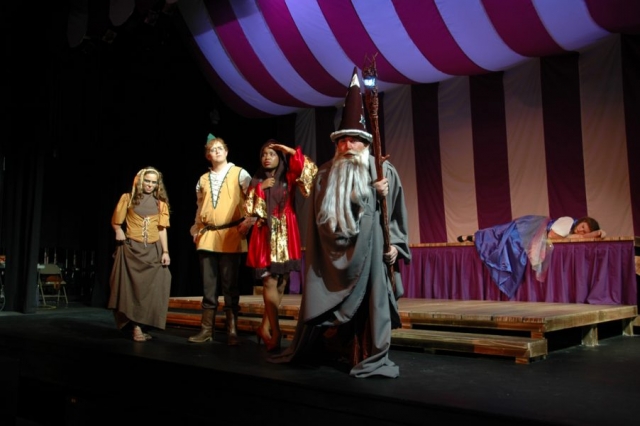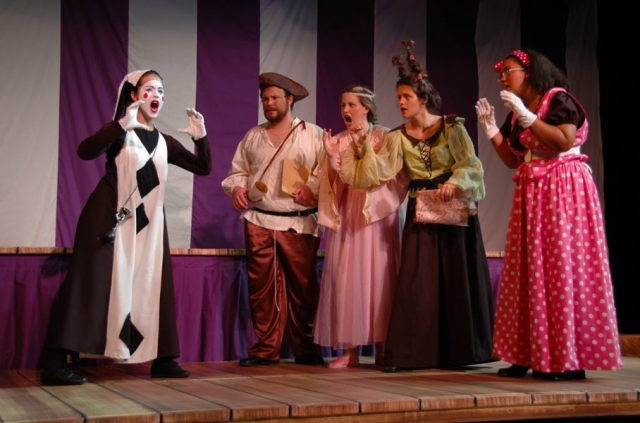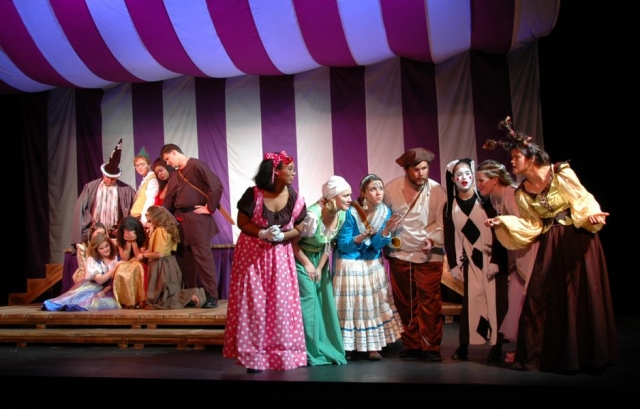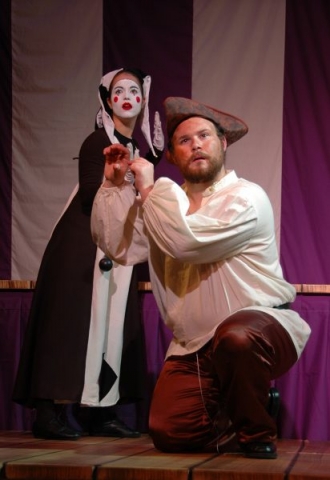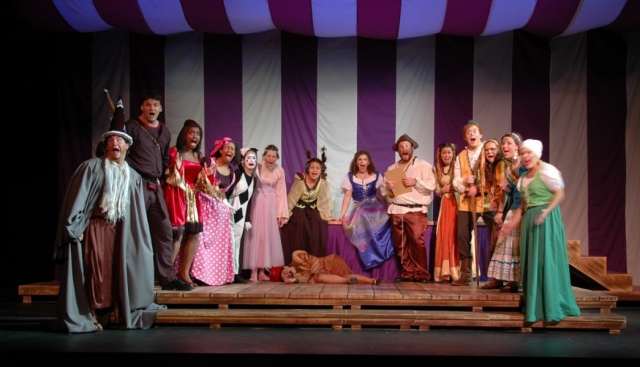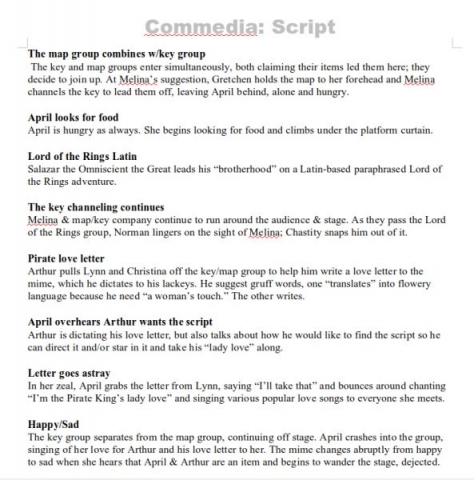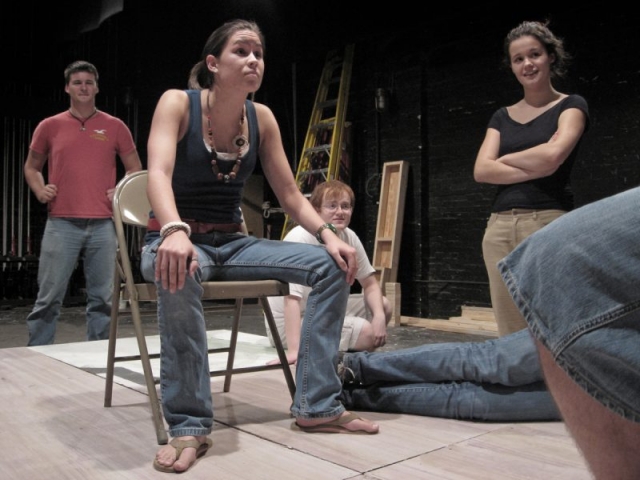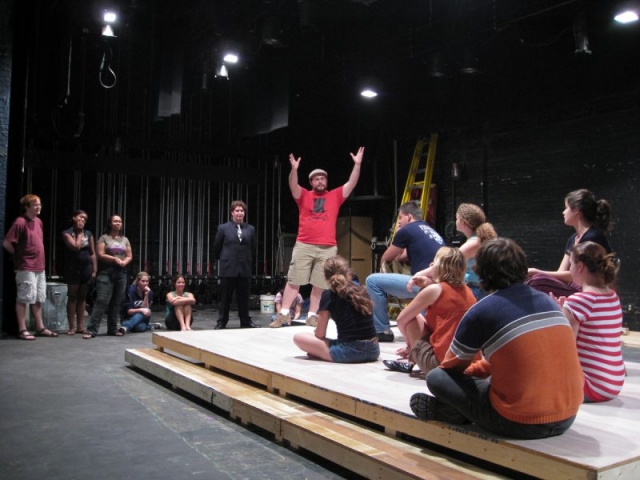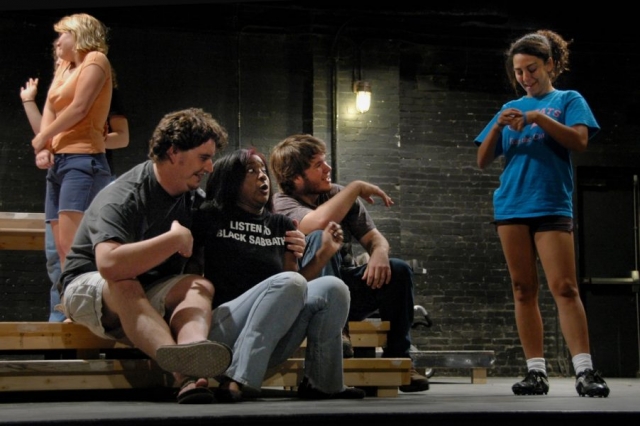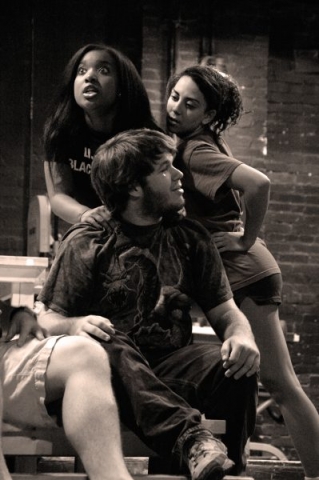
This was a truly unique experiment, in which students and I combined and implemented theatre traditions and techniques from several eras and genres in order to generate an improvisationally based, collectively written and enacted comedy.
We began with the idea of improvising a comedy in the tradition of the Commedia dell’ Arte (a form of improvisational street theatre from the Italian Renaissance), which has been passed down to us in the form of scenarios – long and detailed plot descriptions with no dialogue but with stock characters that have their origins in antiquity and which persist today in various forms of theatre, television, and film dramas. For example, George Jefferson from the 1970s TV comedy “The Jeffersons” may be seen as a form of the commedia character Pantalone, a miserly, foolish older man who is often made the butt of jokes by his clever servant, the Jeffersons’ maid, Florence. Similar parallels may be drawn to commedia from TV shows such as “I Love Lucy,” “The Beverly Hillbillies,” “The Simpsons,” “Arrested Development”; films like “It’s a Mad, Mad, Mad, Mad World”; and musicals like “A Funny Thing Happened on the Way to the Forum.” It is Commedia that spawned the term “slapstick,” based on a common prop: a two-pieced hinged paddle that provides a loud smack when applied against the posterior region of an unsuspecting bent-over character.
Although Commedia provided the inspiration, several more modern methods and genres also came into play.
Chief among them is Long Form Improvisation, a form of extended improvisational techniques based on certain central elements that strives to create and preserve a story line rather than merely generate quick, off the cuff laughs. This latter kind of improv, short form, is the kind commonly experienced at comedy club Improv Nights and TV’s “Whose Line Is It Anyway?” for example. In long form improv, performers are encouraged to follow their imagination, not towards the easy laugh, but towards a deeper truth and consistency of character that can be sustained for an hour or two. Long form is often used to create or enrich Sketch Comedy, as in Saturday Night Live.
We also applied techniques of collective creation pioneered by Jerzy Grotowski (Poland) and honed by Enrique Buenaventura (Colombia) and Augusto Boal (Brazil). Under collective creation, the actors begin with a theme or goal and are guided by a director to gradually build a story through discussion and experimental improvisation in which their ideas are played out and evaluated in rehearsal, and edited together by a facilitator/ director. This constituted the main part of our process.
 The result of our 2-month process was a play which had a prepared story but largely improvised dialogue, much along the lines of TV’s “Curb Your Enthusiasm,” where plot “modules” are arranged to build a coherent plot. The result in this case concerned a group of down-on-their-luck actors who have been hired to provide atmosphere at a Medieval Faire, King’s Castle Fantasy Island Park of Wonder, located on an island that is accessible only by ferry. When one of their company members is strangely murdered by arrow, gunshot, and poison, they are trapped on the island overnight and must work together – not to find the murderer (they could care less about him), but to find the “treasure” hidden by the murder victim, which includes not only money, but an item that could result in a Hollywood career for whoever possesses it. The cast tries to overcome their mutual dislikes and jealousies to follow the clues that lead to the treasure. The resulting madcap adventure has, strangely enough, a surprise ending.
The result of our 2-month process was a play which had a prepared story but largely improvised dialogue, much along the lines of TV’s “Curb Your Enthusiasm,” where plot “modules” are arranged to build a coherent plot. The result in this case concerned a group of down-on-their-luck actors who have been hired to provide atmosphere at a Medieval Faire, King’s Castle Fantasy Island Park of Wonder, located on an island that is accessible only by ferry. When one of their company members is strangely murdered by arrow, gunshot, and poison, they are trapped on the island overnight and must work together – not to find the murderer (they could care less about him), but to find the “treasure” hidden by the murder victim, which includes not only money, but an item that could result in a Hollywood career for whoever possesses it. The cast tries to overcome their mutual dislikes and jealousies to follow the clues that lead to the treasure. The resulting madcap adventure has, strangely enough, a surprise ending.
This production featured alumnus Patrick Pieri and a large contingent of first-semester freshmen.
This production was extensively referenced in a conference presentation: “Just Add Dialogue: Writing a Play-Length Improvisation.” Southeastern Theatre Conference Annual Convention (SETC), Chattanooga, TN. March 2015.
Rehearsal/process photos
Credits: Scenic Design by William Elliott, Lighting by Holly Bennett, Costumes by Kristina Lomelin, Sound by Daniel Roscoe. Stetson University, November 2008.

